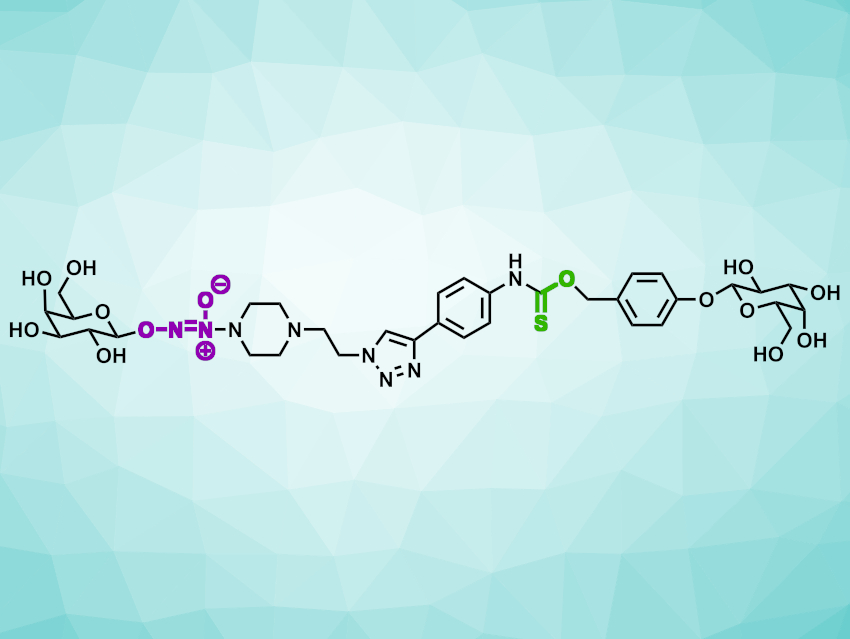Nitric oxide (NO) and hydrogen sulfide (H2S) are toxic gases. However, in very small amounts, they serve as important signaling molecules in the body. NO-releasing compounds, for example, are used in the treatment of heart disease. H2S has been shown to have a protective effect on the heart, as well. Delivering both of the compounds together could be promising for the development of drugs with cooperative therapeutic functions against heart failure, e.g., after a heart attack.
Meng Qian, Qiang Zhao, Nankai University, Tianjin, China, and colleagues have developed an enzyme-responsive hybrid prodrug for the combined delivery of nitric oxide and hydrogen sulfide (pictured). The team synthesized the prodrug starting from D-galactose, which was protected and reacted with a NONOate building block that contains the NO units (pictured in purple) and a piperazine ring.
The second half of the prodrug contains a COS unit (pictured in green), which can be released and converted to H2S by the enzyme carbonic anhydrase (CA). It was prepared from protected D-galactose, p-hydroxybenzaldehyde, and 1-ethynyl-4-isothiocyanatobenzene. The two fragments were then coupled to give the desired hybrid prodrug. When the product is exposed to the enzyme β-galactosidase, the galactose groups at the ends are cleaved and NO and COS are released. The latter is then converted to H2S by CA.
The researchers tested the prodrug using a rat model of heart failure after myocardial infarction (i.e., heart attacks). They found that the prodrug improved cardiac function and could, thus, be a promising drug candidate.
- Enzyme-responsive hybrid prodrug of nitric oxide and hydrogen sulfide for heart failure therapy,
Qi Liu, Guangbo Ji, Yushu Chu, Tian Hao, Meng Qian, Qiang Zhao,
Chem. Commun. 2022.
https://doi.org/10.1039/d2cc02267b




